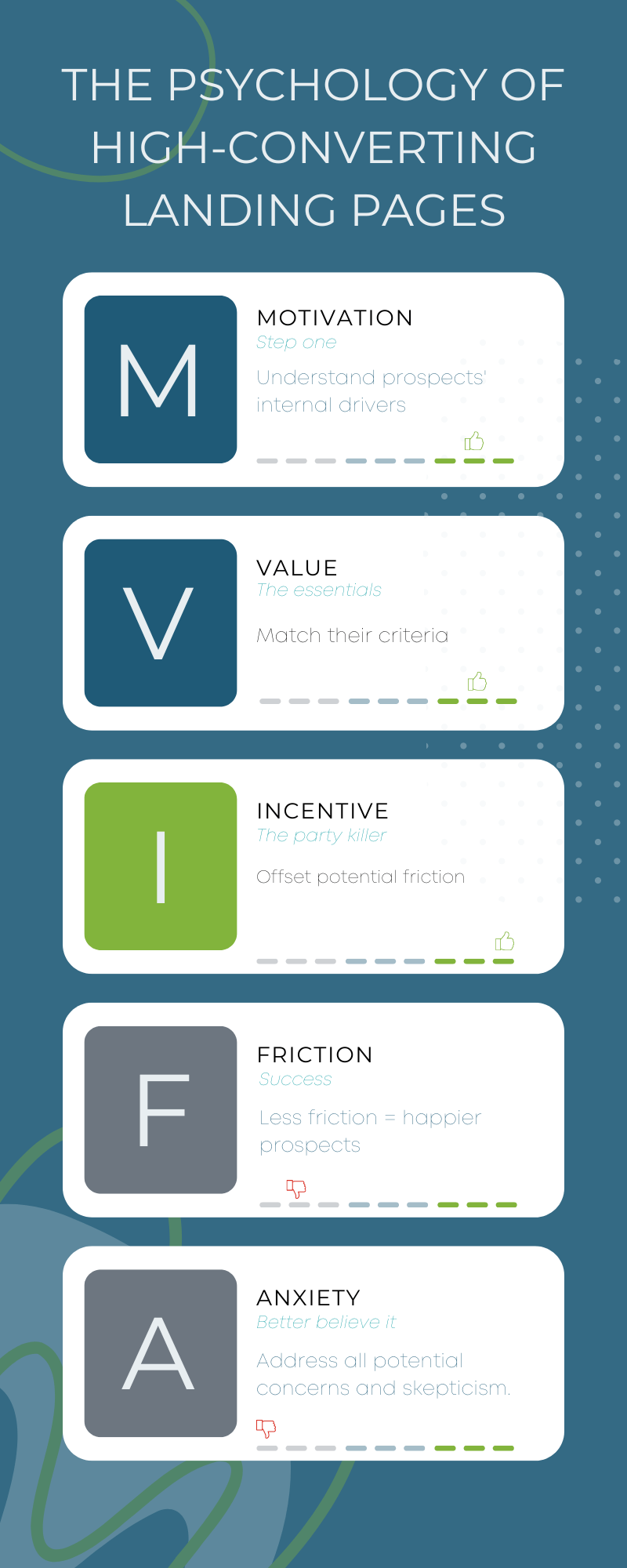There’s hardly anything more frustrating than when your landing page doesn’t convert, largely because it can be hard to pinpoint the reason why.
Is the copy not resonating with your audience?
Are you not speaking to their pain points?
Is the website too difficult to navigate?
If you’re not getting the results you want, you might want to learn more about heuristic methodology. This framework was crafted by the MECLABS Institute and provides a repeatable methodology to help improve landing page success.
MECLABS’ Conversion Sequence Heuristic provides a probability tool to increase the likelihood of conversion (or “C” in the formula below). The sequence is as follows:
Don’t be scared by the look of an equation. Although this may look like a problem you’d see in a college math class, it’s not actually an equation at all.
Let’s simplify this methodology and explain how to put it into action.
M Stands for Motivation
Motivation is the most important element that impacts conversion rates, which is why it’s the first thing we’re discussing.
The most critical thing to remember about prospects’ motivation is that it’s not negotiable. Visitors do not visit your website to change their minds.
If readers are already there, they’re likely looking for the extra push they need to make a purchase.
Proper segmentation plays a crucial role in identifying ways to motivate visitors by personalizing messaging or offering solutions to their specific pain points.
Addressing these pain points or creating a sense of urgency can help increase buyers’ motivation, leading to a greater chance of conversion.
V Stands for Value
The value of your offering is the “Why.” Prospects want to know, “Why should I buy from this company instead of its competitors?” (Answering this question is why it’s important to know your competitors, but that’s another discussion.)
Of course, to increase the chance of conversion, you also want to increase the value to your readers. Make sure your landing page sets a good first impression.
It’s not common for readers to grow into a product they weren’t attracted to at first sight.
You’ll also want to create a sense of scarcity, exclusivity, and appeal. If users can get your product somewhere else, why should they get it from you?
Part of the answer to that is trust, another important element of value. If your prospects don’t trust that your company is legitimate and that they’ll be satisfied in doing business with you, your conversion is lost.
Finally, make sure your landing page is clear on exactly what you’re selling. A lack of clarity is one of the quickest ways to ensure your potential customers go elsewhere for their needs. They will choose to work with a company that they feel truly understands them.

I Stands for Incentive
Buyers also need to have an incentive to make a purchase. Of course, in sales, the buyer is incentivized by the product or service itself, but that can’t be the only thing they gain.
You’ll need to convince your prospects that it’s worth giving out their contact information to do business with you or to get your product or service.
The right incentives can lead to higher conversion rates, but you need to make sure your incentives are genuinely valuable.
If users feel like they’ve been “tricked” into giving you their information (perhaps they’re not getting what they expected in return), you won’t see an increase in conversions.
F is for Friction
To be clear: not all friction is bad. But if you know the friction in the buying process is unnecessary, eliminate it as soon as possible.
Friction falls into two categories: length-related and difficulty-related. If the conversion process is too long or takes too much effort on the user’s part compared to what they’re going to gain, you’re likely to lose them.
In general, the conversion process is the same no matter what you sell. A prospect sees an ad and is intrigued. They click the ad, see the payoff, and, if they’re incentivized enough, they’ll complete a form for you (even if they’d really prefer not to).
To increase the chance of conversion, simplify the process as much as possible. Often, unnecessary metric markers result in friction. In fact, many businesses complicate the process without even realizing it.
A is for Anxiety
Think about the last time you entered your contact information on a website and were subsequently bombarded by unwanted spam calls or emails. This very situation is what makes so many buyers anxious about handing out their information, even if they’re interested in what that company is selling.
Buyers are also often anxious about providing their credit card information for e-commerce purchases. How can they be sure their data and payment details will be safe? Reassuring your audience that their data is encrypted and is never shared can help to reduce this anxiety and earn their trust.
Conclusion
Now that you have a better understanding of creating converting landing pages, don’t forget the journey begins with your ad copy and creative elements. Keep your promises and make sure your site visitors see the payoff they’re looking for.
We can simplify this equation-like methodology: Be your audiences’ advocate.
You can’t advocate for a person without having a solid understanding of his/her needs, likes, and dislikes. Taking the time to learn about your target audience and tailor your approach can make a huge difference in landing those precious conversions.


